Josh's Frogs
Tropical Vivarium Plant Overview
At Josh's Frogs, we carry a wide array of vivarium-suitable live terrarium plants. All of these tropical plants have been carefully selected to insure they are ideal for growing in a naturalistic terrarium.
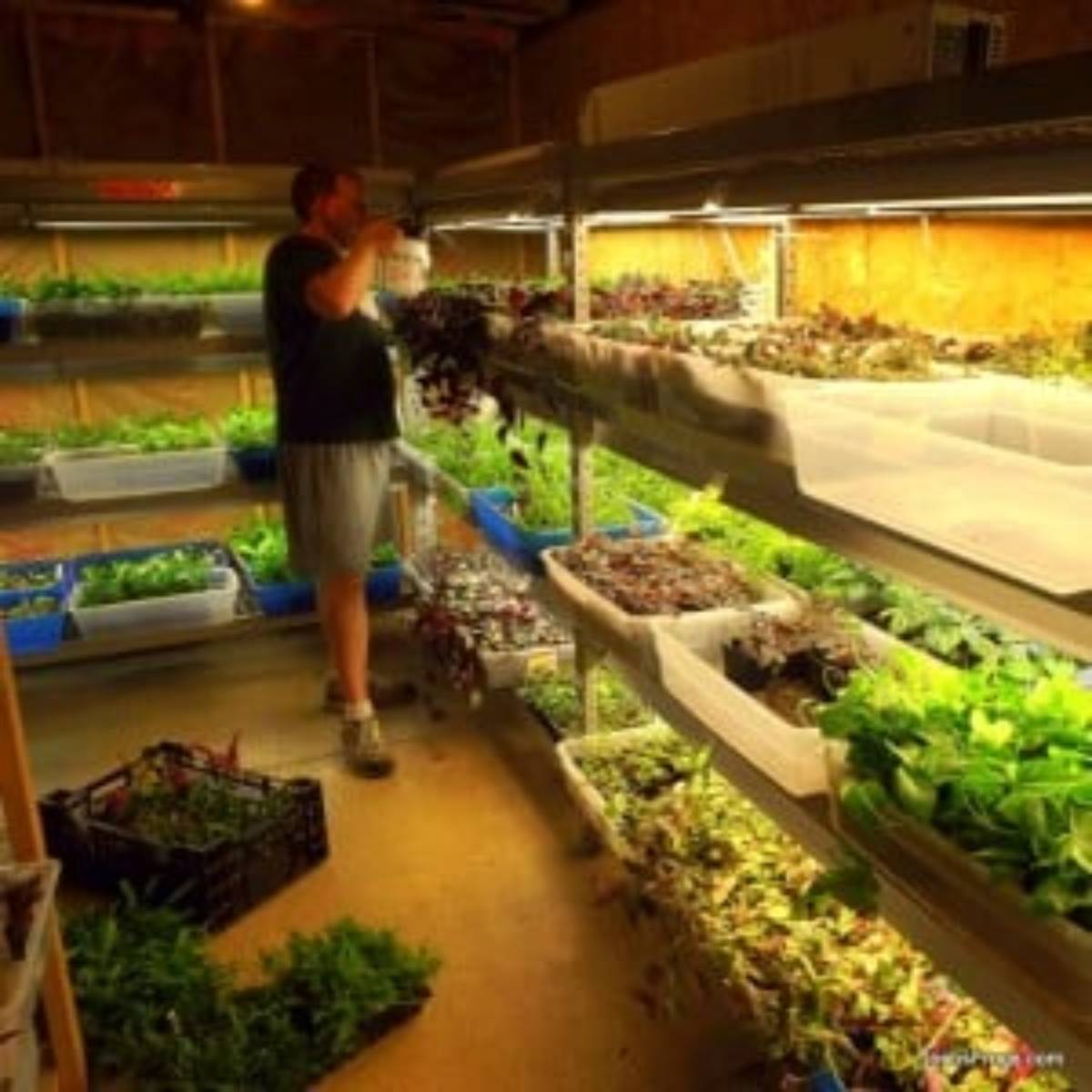 Josh's Frogs carries a huge variety of tropical plants, perfectly suited for use in a naturalistic vivarium.
Josh's Frogs carries a huge variety of tropical plants, perfectly suited for use in a naturalistic vivarium.
Plants contribute greatly to the health of a vivarium and it's inhabitants. Live terrarium plants intake CO2 and release oxygen, uptake nutrients as they grow, provide shelter, cover, calling, and egg-laying sites for poison dart frogs, and greatly add to the visual appeal of a naturalistic vivarium. At Josh's Frogs, we offer several different classes of tropical plants for sale – below are brief descriptions of each to help get you started in selecting the perfect live tropical plants for your vivarium. Keep in mind that more in-depth care information is available for specific plants on their individual pages, found HERE.
For ease of planting, Josh's Frogs has classified every live terrarium plant we sell into 3 basic categories: epiphytes, background plants, and foreground plants. Please click on the appropriate link to learn basic care information and planting techniques for that specific group of plants.
Peperomia
Peperomias are a large group of plants, with over 1500 known species. Mostly from Central and South America, many Peperomias are ideally suited for use in naturalistic tropical vivaria. Most Peperomias actually grow as epiphytes in cloud forests, but tolerate being planted terrestrially quite well when used in a naturalistic vivarium. As a general rule, Peperomias do not appreciate a soaked or saturated substrate.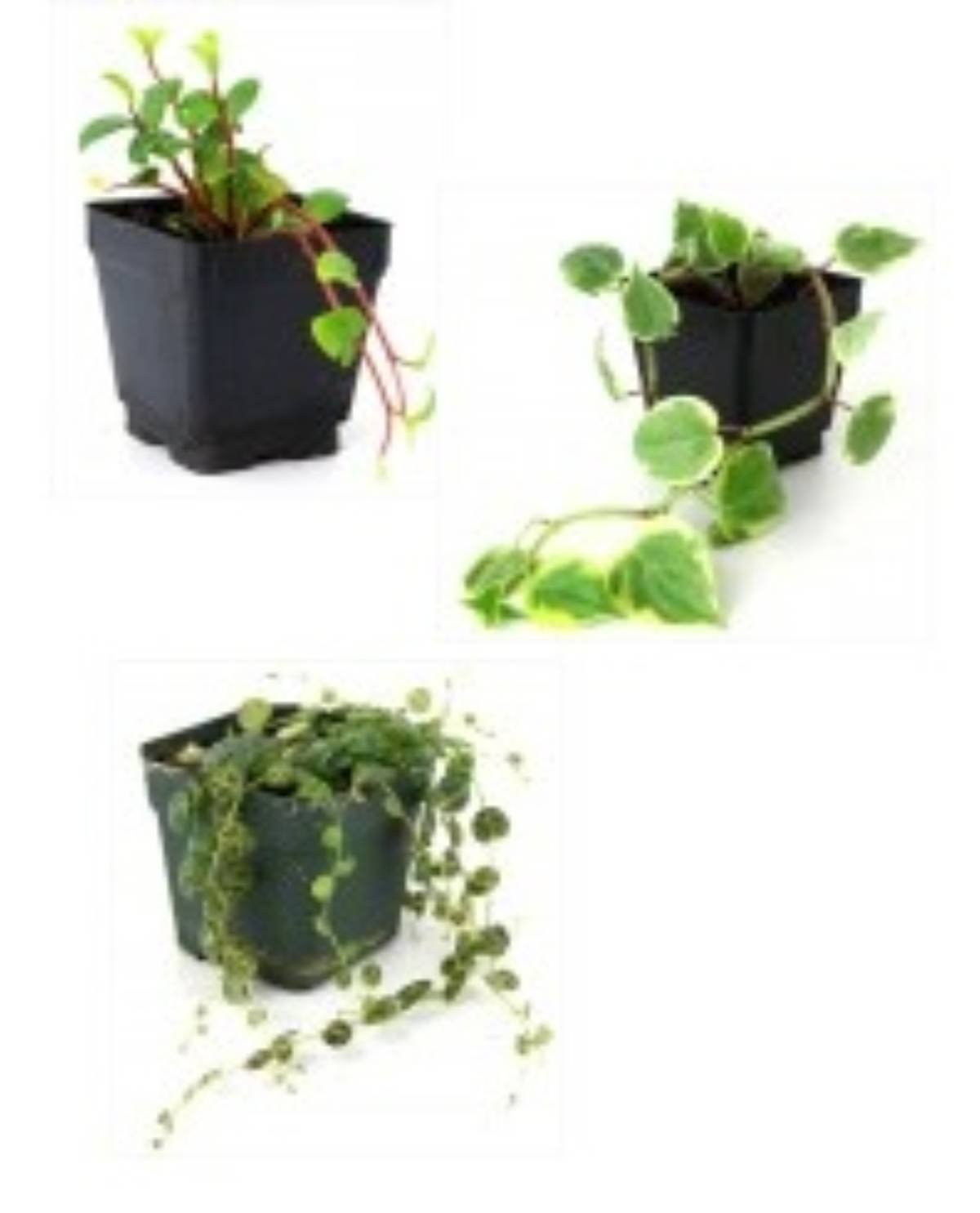
Peperomias appropriate for vivarium use are primarily from cloud forests.
Pilea
Pilea are a large group (over 600 species) of mostly tropical and subtropical plants that occur in warm and wet regions the world over. Pilea are known for their colorful foliage, that often has eye catching patterns and interesting texture. Pilea require high humidity in order to thrive, making them ideal plants for a tropical vivarium.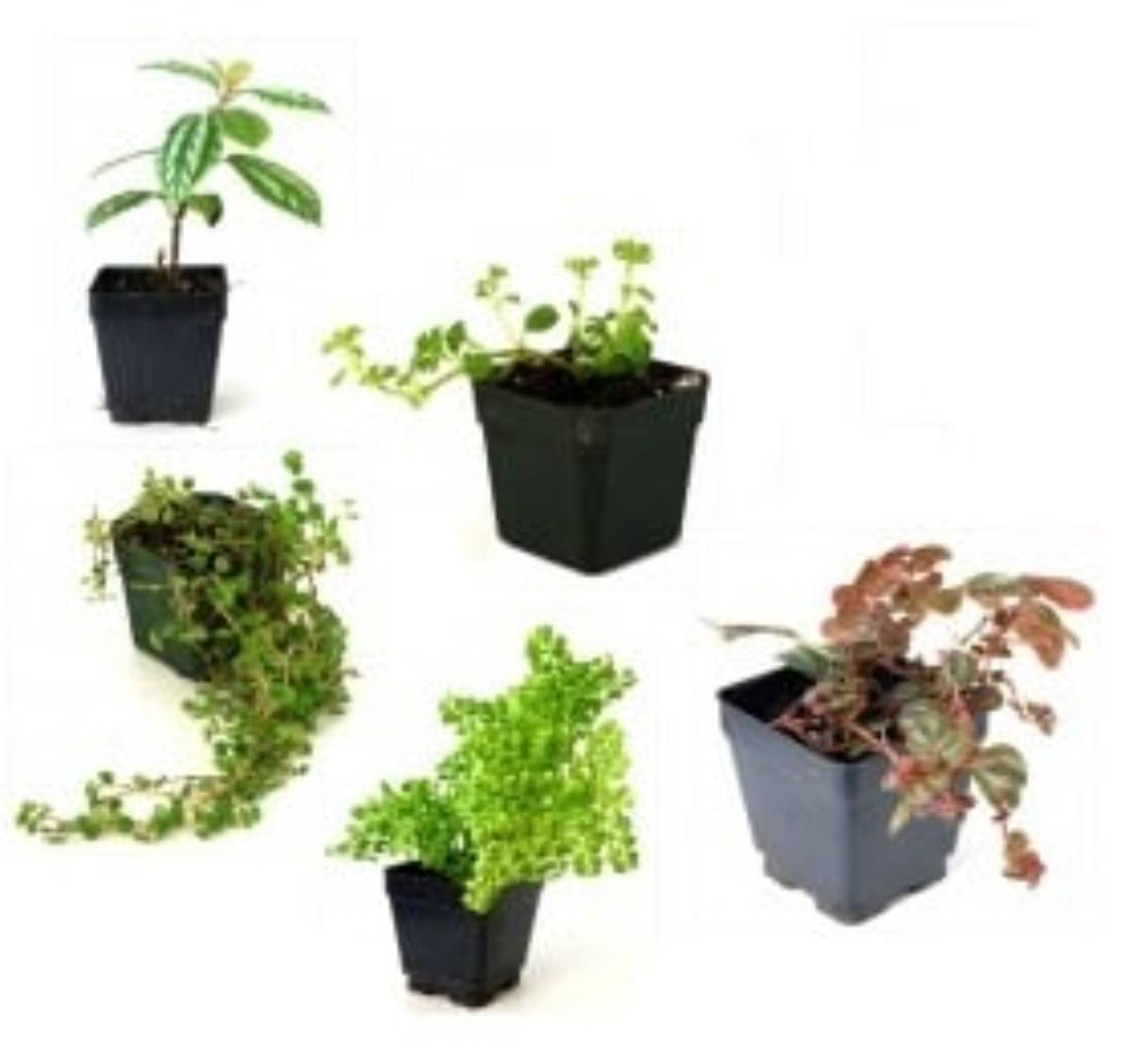
Pilea make ideal tropical vivarium plants.
Vines
Vines are a great addition to a terrarium. Vines rapidly cover backgrounds and provide hiding places for frogs. Frogs are more visible when they have a hiding place close by, so vines will help you see your frogs more! Vines also tend to grow quickly, helping to uptake excess nutrients in the tropical vivarium. No vivarium is complete without a couple vines from Josh's Frogs!
Vines will quickly cover the background and hardscape in a naturalistic vivarium.
Tropicals
At Josh's Frogs, the Tropicals live terrarium plant category simply is a catch-all for those tropical plants that do wonderfully in a vivarium that do not easily fit into the other categories. Tropicals includes many great plants for use in a naturalistic vivarium, including Sygonium, Spathiphyllum, and Athurium. These plants are known for their large, broad leaves which make excellent calling and egg laying sites for dart frogs.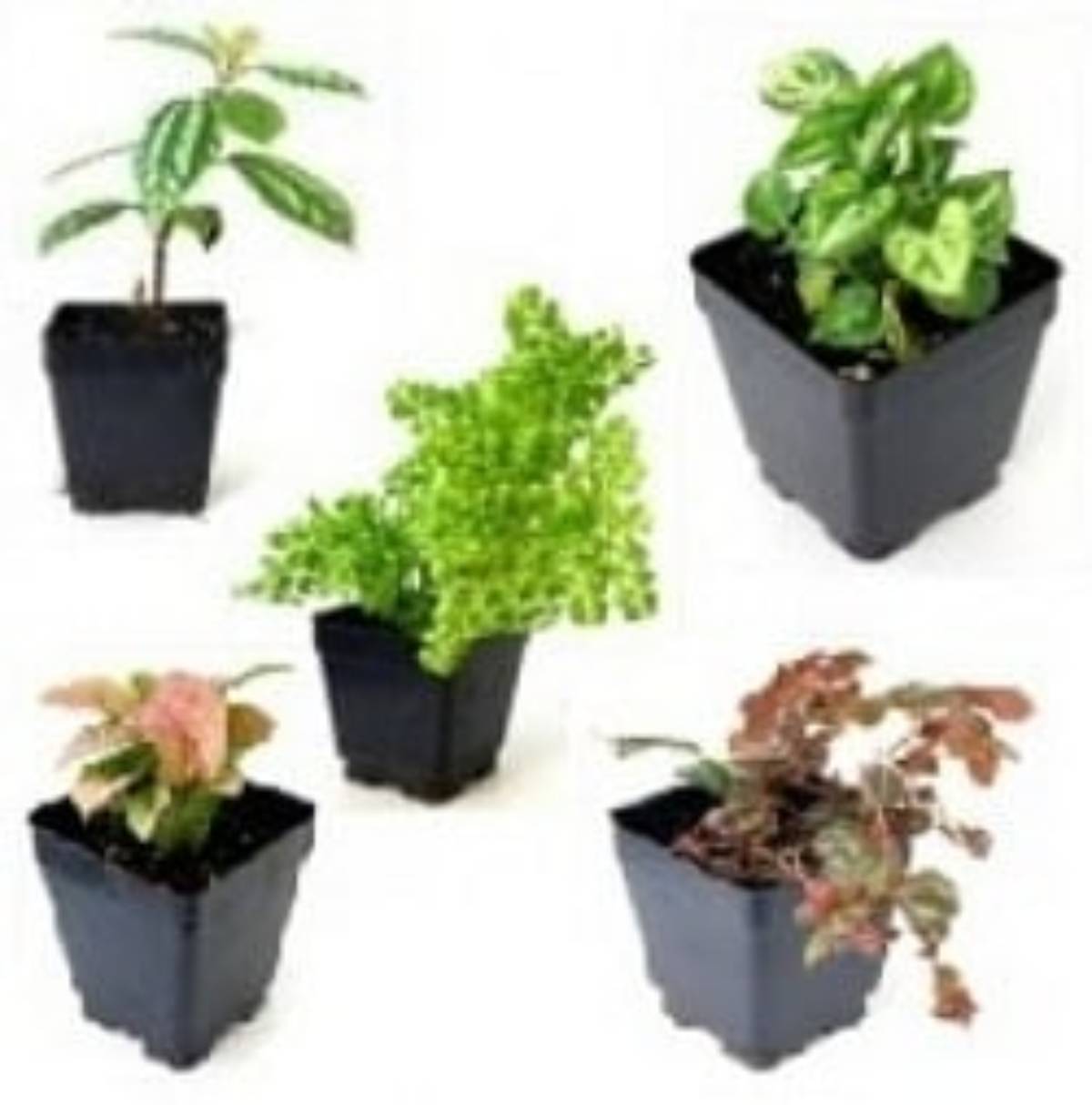
Dart Frogs love large, broad leaves like those on this Spathiphyllum.
Ferns and Mosses
Ferns and mosses are both considered bryophtes, or non-vascular plants. These primitive plants may not be as evolved as many other tropical plants offered by Josh's Frogs, but they're just as appropriate for use in the home vivarium. Ferns and mosses will quickly spread in a tropical vivarium, and really add to the jungle vibe. Green foliage and interesting growth habits make ferns and mosses a group unto themselves when it comes to selecting live tropical vivarium plants for a naturalistic vivarium.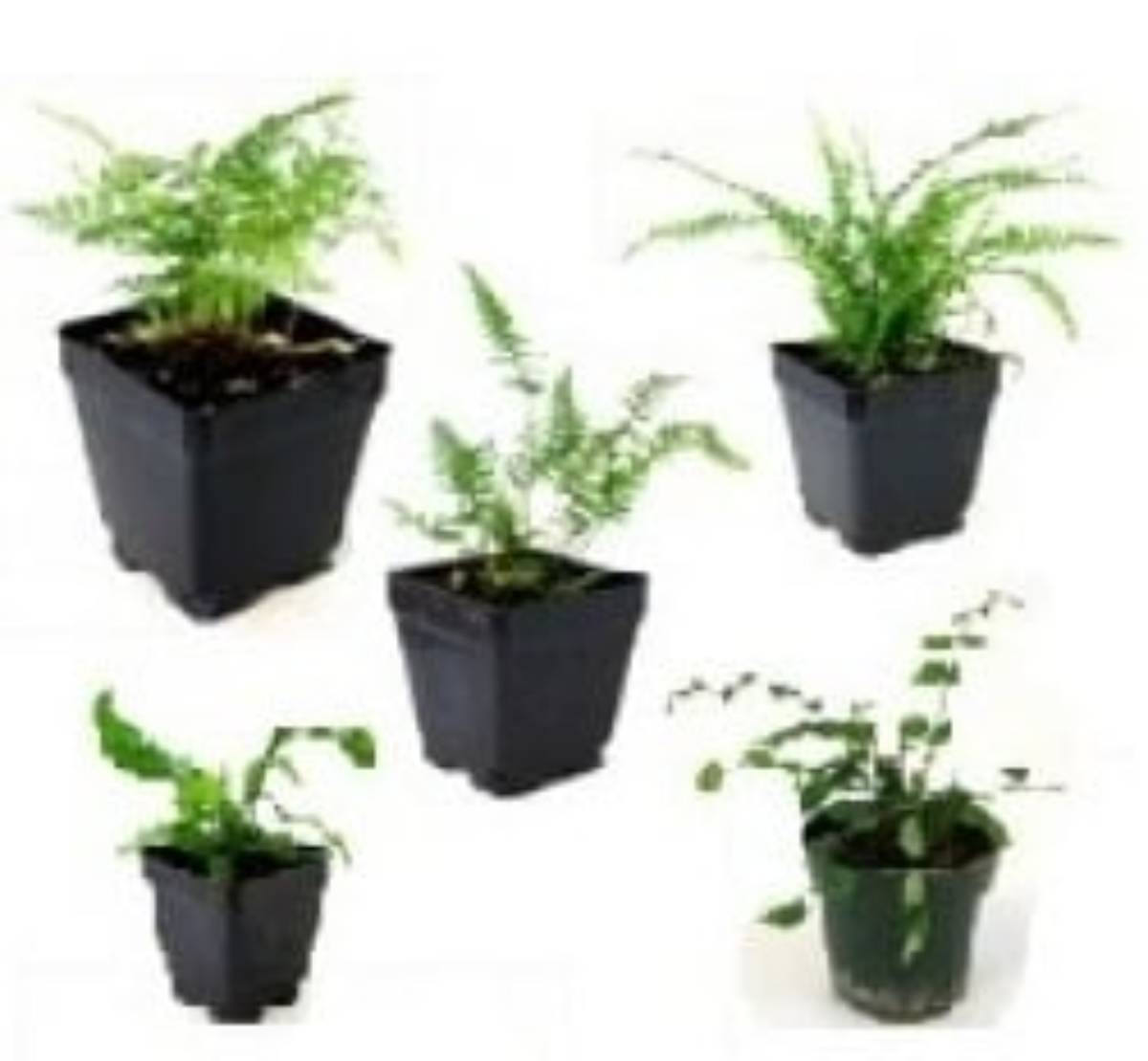
Ferns and Mosses add a natural, prehistoric look to a vivarium.
Bromeliads
Bromeliads are one of the most unique groups of tropical plants regularly used in naturalistic vivaria. Best known for their ability to hold water (and thus function as rearing sites for poison dart frog tadpoles), most bromeliads are epiphytes, which means they naturally grow without soil. Bromeliads often grow on trees in the wild, and are best mounted on wood or the background in a naturalistic vivarium.
Cryptanthus are also bromelaids, but tend to do better when planted terrestrially in the vivarium. Also known as earth stars, Cryptanthus are available in a variety of cultivars, which display different colors, patterns, and growth habits.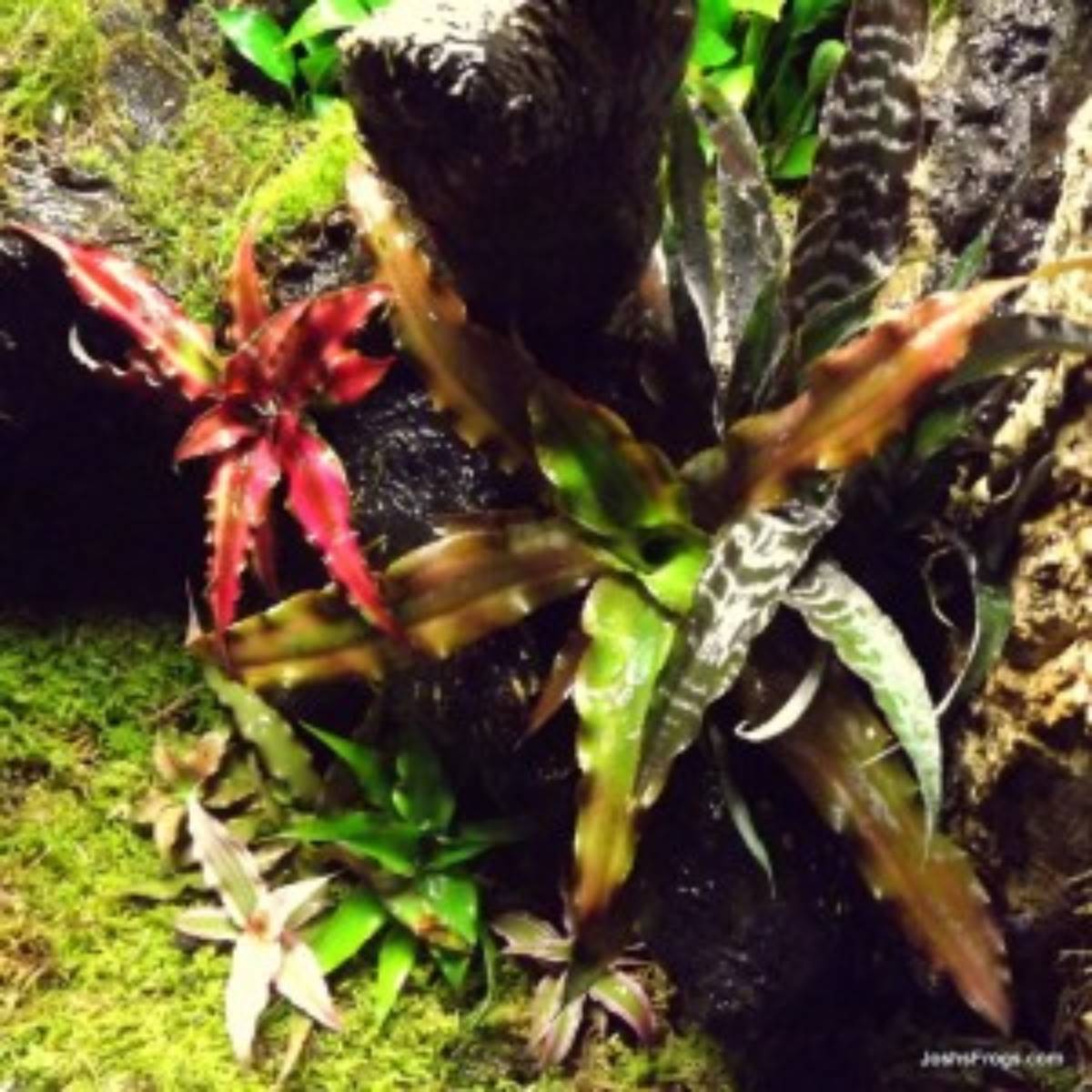
Cryptanthus are a great terrestrial bromeliad in the naturalistic vivarium.
Orchids
Grown primarily for their flowers, orchids make a colorful addition to any naturalistic vivarium. Largely epiphytes in nature, most orchids are best mounted on wood or the background of a tropical vivarium. Orchids will not tolerate standing water on their leaves, and greatly benefit from regular air circulation in the vivarium. Make sure to utilize a well-draining substrate when planting orchids.
Orchids are great for adding a splash of color to the vivarium.
